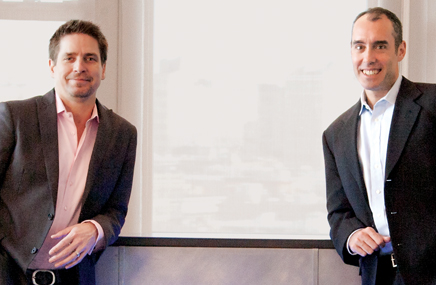Many healthcare marketing firms have spent the last few years trying to mitigate the effects of patent-cliff fallout. And then there’s NeON, whose slogan might very well read: When a drug’s patent gets old, that’s typically when we get started.
“We’ve got that three- to four-year window on most of our products,” says NeON managing director Mark Arnold, who was hired from AgencyRx about a year ago.
The news this year is that three-year-old NeON is finally getting the chance to get involved earlier in the product lifecycle. The agency launched Elelyso, Pfizer’s new drug for treating Gaucher’s disease. The drug finally won approval May 1 after an initial FDA denial in 2011. Elelyso was the agency’s first new-product launch. And Johnson & Johnson awarded the agency canagliflozin, its investigational SGLT2 inhibitor for diabetes.
NeON typically does white-space promotion for mature brands facing generic competition in some way, shape or form. Well, there were plenty of those, too, among the seven campaigns it launched over the past year.

One was for Pfizer brand Alsuma, an auto-injector formulation of the active ingredient in off-patent migraine drug Imitrex. It joined NeON portfolio staple Relpax, Pfizer’s other migraine treatment. They’re among several roster brands stemming from Pfizer’s established products business unit. The agency also did a New Year’s resolution-themed DTP campaign for smoking-cessation product Nicotrol with a relationship-marketing component.
Another existing client, Gilead, awarded NeON the business for its hepatitis B antiviral Viread. NeON is creating a pre-launch campaign for the drug showcasing some new immunohistology data that may give Viread, which was approved in 2008, a marketing edge.
The agency also brought on a new client, Novartis, taking on digital project work for its blockbuster oncology drug Gleevec, specifically the GIST indication. Data now show the benefit of taking Gleevec three years post surgery. The Swiss firm also named NeON the digital AOR for leukemia drug Tasigna, both professional and consumer.
With the addition of this new work, Arnold says that his agency is poised for growth this year. During the 12 months to May, he says, growth has been “nice and steady.” Dedicated NeON headcount rose from 90 to 110 (the Draftfcb Healthcare conflict shop also shares some resources throughout the Interpublic Group network).
Another one of the year’s campaigns that NeOn took part in involved running the retail-pharmacy component of Pfizer’s “Lipitor For You” loyalty program. “Instead of doing the generic block-out of Lipitor, we had the pharmacies offer the $4 co-pay card at the point of purchase in order to keep people on brand,” says Arnold.
While some have doubted the program’s success (According to IMS Health data, Lipitor market share stood at 33% as of mid January, as opposed to Pfizer’s goal of retaining a 40% market share during the 180-day exclusivity period ending May 31), the assignment is another feather in NeON’s gradually widening cap.
The agency recently began offering clients a commercial optimization tool, enabling them to dial promotions up or down based upon ROI metrics. One client that has started using it is Boehringer Ingelheim, whose BP drug Micardis will face generic competition from Diovan in September. BI no longer fields a Micardis sales force, and the agency was able to show how sales were maintained after the switch to non-personal promotion.
Arnold wants to do the same for Gilead HIV/AIDS drug Atripla, now playing second fiddle in the sales line behind recently approved Complera and perhaps soon-to-be third after the “Quad” pill. “We have a nice little case study to show them on how taking things digital and non-personal can still keep the brand going.”
From the July 01, 2012 Issue of MM+M - Medical Marketing and Media







